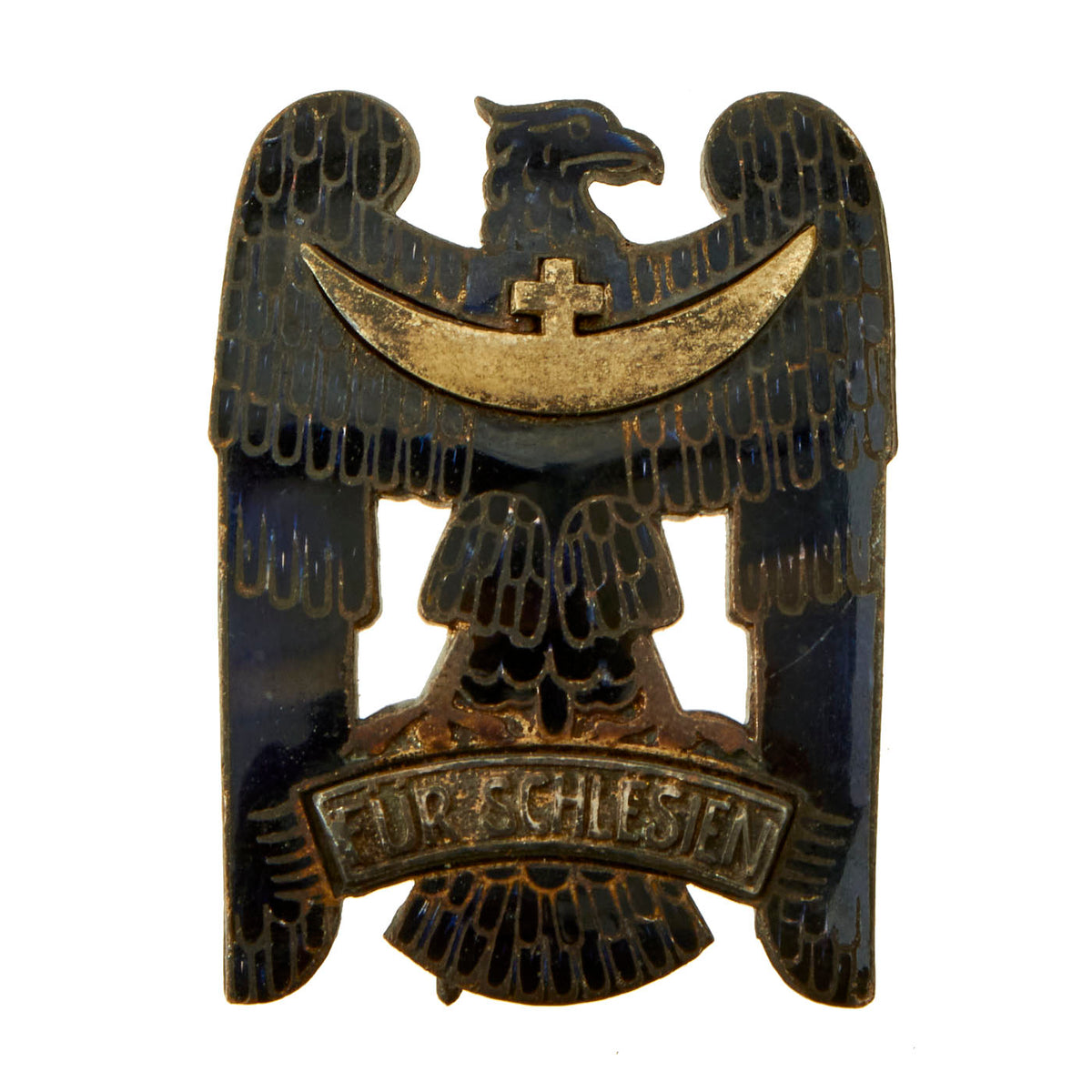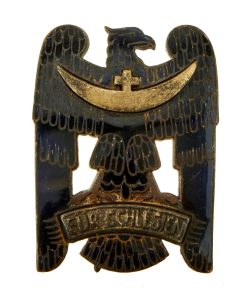Original German Weimar Republic Silesian Uprisings Freikorps Oberland Silesian Eagle First Class Award Original Items
$ 395,00 $ 118,50
Original Item: Only One Available. This is a fantastic example of a rather scarce award, the Schlesischer Adler (Silesian Eagle), offered in wonderful condition. The Silesian Eagle was a medal awarded to members of the German right-wing paramilitary group Freikorps Oberland for three or six months of service, as well as for fighting during the Silesian Uprisings during the Weimar Republic.
Instituted on the 19 of June 1919 by VI. Armee-Korps Generalleutnant Friedrich von Friedeburg, the award was given in two classes, 2nd class for three months of service and 1st class for 6 months of service. Following the Freikorps’ participation at the Battle of Annaberg, it was also awarded with oak leaves, swords, or both. This medal was one of the few Freikorps awards that were allowed to be worn on uniforms after the Wehrmacht banned unofficial medals in 1935. However, the swords and oak leaves were banned, but despite interdictions, many veterans continued wearing them in active military service in NSDAP Germany.
This 1st Class award features a lovely pin arm and catch on the reverse. The front of the award features a large, black Reichsadler, a symbol of Germany since the Holy Roman Empire. Adorned along the tail of the eagle are the words FÜR SCHLESIEN, meaning “For Silesia”. Along the top is a half crescent with a cross. All of the enamel has been retained very well, but nearly all of the finish on the front and reverse are worn.
A lovely example ready for further research and display.
The Silesian Uprisings were a series of three uprisings from August 1919 to July 1921 in Upper Silesia, which was part of the Weimar Republic at the time. Ethnic Polish and Polish-Silesian insurrectionists, seeking to have the area transferred to the newly founded Polish Republic, fought German police and paramilitary forces which sought to keep the area part of the new German state founded after World War I. Following the conflict, the area was divided between the two countries. The rebellions have subsequently been commemorated in modern Poland as an example of Polish nationalism.
Much of Silesia had belonged to the Crown of Polish Kingdom in medieval times, but it passed to the Kings of Bohemia in the 14th century and, following this, to the Austrian Habsburgs. Frederick the Great of Prussia seized Silesia from Maria Theresa of Austria in 1742 in the War of Austrian Succession, after which it became a part of Prussia and subsequently, in 1871, the German Empire. Although the province of Silesia overall had by then become overwhelmingly German-speaking (mainly Lower Silesia), but Poles constituted a majority in Upper Silesia.
Fast Shipping with Professional Packaging
Thanks to our longstanding association with UPS FedEx DHL, and other major international carriers, we are able to provide a range of shipping options. Our warehouse staff is expertly trained and will wrap your products according to our exact and precise specifications. Prior to shipping, your goods will be thoroughly examined and securely secured. We ship to thousands clients each day across multiple countries. This shows how we're dedicated to be the largest retailer on the internet. Warehouses and distribution centres can be located throughout Europe as well as the USA.
Note: Orders with more than one item will be assigned a processing date depending on the item.
Before shipping before shipping, we'll conduct a thorough inspection of the items you have ordered. Today, the majority of orders will be delivered within 48 hours. The delivery time will be between 3-7 days.
Returns
The stock is dynamic and we cannot completely manage it because multiple stakeholders are involved, including our factory and warehouse. So the actual stock may alter at any time. It's possible that you may not receive your order once the order has been made.
Our policy is valid for a period of 30 days. If you don't receive the product within 30 days, we are not able to issue a refund or an exchange.
You can only return an item if it is unused and in the same state as the day you received it. You must have the item in its original packaging.
Related products
Uncategorized
Band of Brothers ORIGINAL GERMAN WWII Le. F.H. 18 10.5cm ARTILLERY PIECE Original Items
Uncategorized
Uncategorized
Armoured Fighting Vehicles of the World: AFVs of World War One (Hardcover Book) New Made Items
Uncategorized
Uncategorized
Uncategorized
Uncategorized
Angolan Rebel 1970s era 60mm Inert Display Mortar from Angolan Civil War Original Items
Uncategorized
Uncategorized
Uncategorized
Australian WWII Owen MK1 Machine Carbine SMG Custom Fabricated Replica with Sling Original Items
Uncategorized
Uncategorized
Uncategorized
Uncategorized
Armored Burgonet Helmet & Polearm from Scottish Castle Leith Hall Circa 1700 Original Items
Uncategorized
Uncategorized










































































